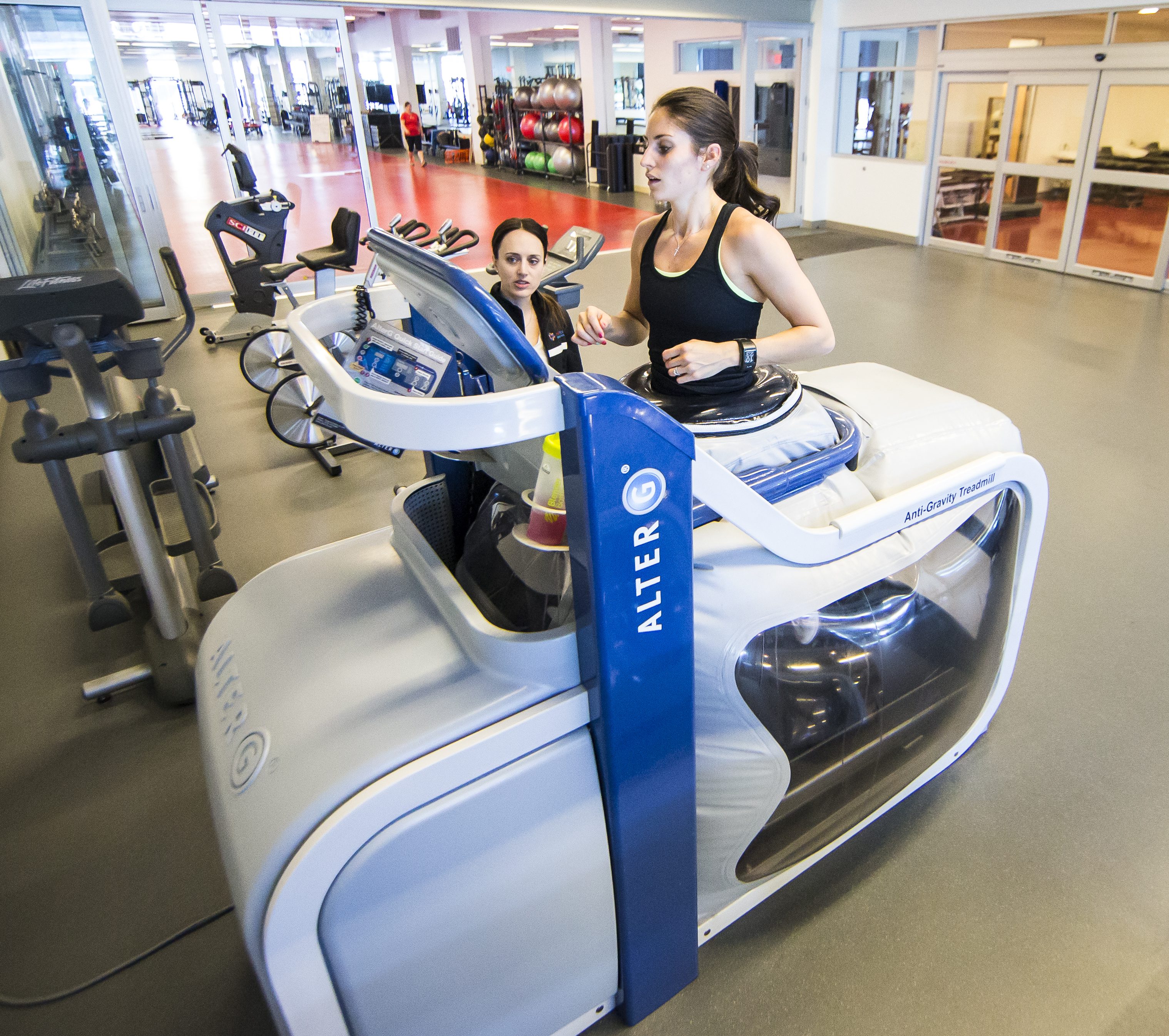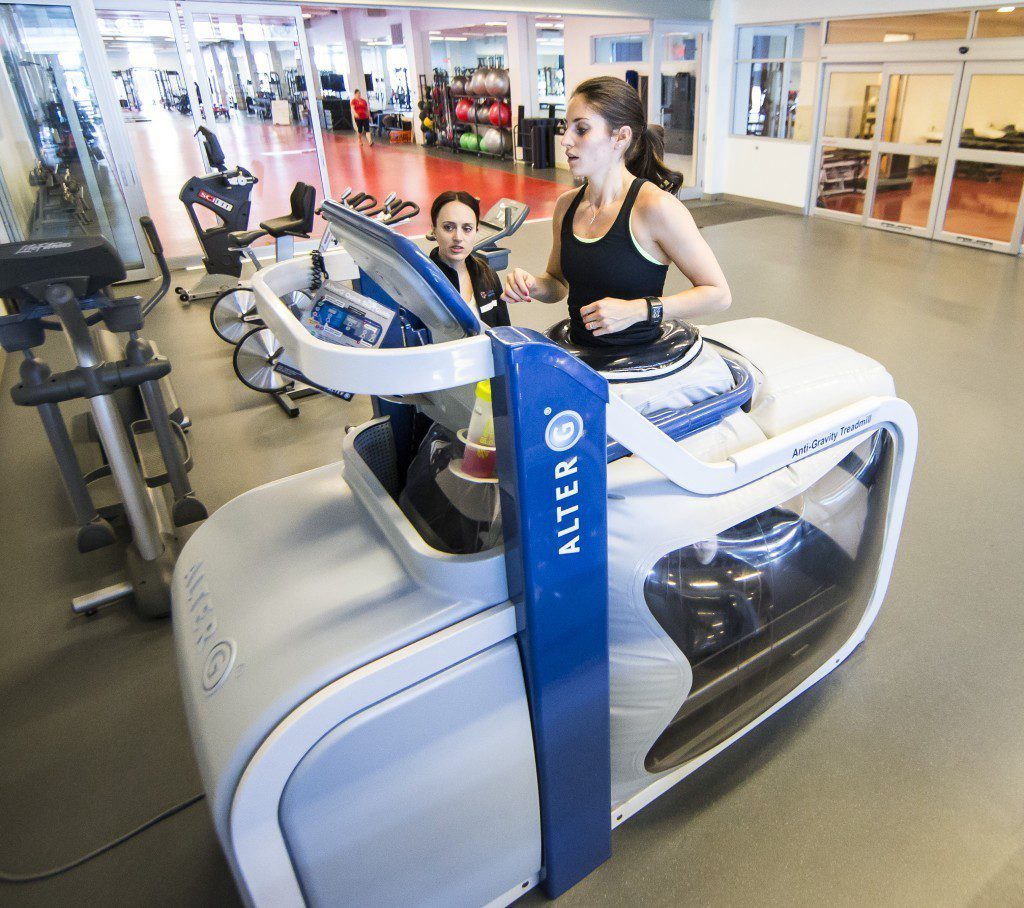Maintain your stride when sidelined with injury


Few things annoy triathletes more than being injured. Time off training requires lots of commitment and patience. Among the most common lower extremity injuries for triathletes are plantar fasciitis, stress fractures and sprained or strained ankles, all of which require an athlete to stop or reduce running.
There are excellent cross-training options for athletes, including water running and getting on an elliptical machine. Water running is perfect for its non-weight bearing nature, while the elliptical, also very low weight-bearing, allows runners to hit near optimal cadence while training, which is hard to mimic in the pool. You can reach a higher cadence in the pool, but only while doing the piston style of running (knees pumping straight up and down). It’s great for cardio, but not biomechanically specific. The most natural running style in the pool results in a very slow cadence, but is therapeutic for hamstring flexibility and strength as well as upper-body strength.
LifeSport coach Jeremy Howard used water running sessions to help an athlete whose foot was run over by a car. “The athlete sustained multiple broken bones and trauma to the ligaments and tendons. We used three months of water running to prepare for her return to running. We used increasing amounts of cadence-based efforts to elevate the heart rate and also focused on these cadence skills that would promote efficiency and reduce impact when she returned to the road.”
LifeSport head coach Lance Watson has used water running extensively as injury rehab to help athletes get back to run fitness, and as injury prevention to supplement training for athletes who tend to break down with higher run mileage. Watson likes to alternate water running with quick, high knee drive to elevate heart rate, and with over-striding to stretch and engage the hamstrings and hip flexors. He also asks athletes to visualize their favourite run intervals.
Both pool running and elliptical training are excellent for cardio – you can maintain VO2 fitness and stay well-conditioned if you dedicate yourself to a good program while waiting for the injury to heal. But, there is one rehab and injury prevention option that’s perhaps the best at accurately mimicking the biomechanics of running and that is the antigravity treadmill. The AlterG, as it is called, is like a standard treadmill with an apparatus attached that inflates around the runner’s lower body, essentially lifting them off the platform, enabling athletes to run with an adjustable percentage of their bodyweight. Training on the AlterG allows an athlete to perform run workouts with little impact but still have identical cadence and similar ground contact time to their natural running style.
Ground contact is important because the less time your foot spends on the ground, the less time your body is standing still. The body only moves forward when it’s in flight. The faster you go, and the better your biomechanics (like forefoot striking), the faster your ground contact time is.
For Trent Stellingwerff, physiologist at the Pacific Institute of Sport Excellence (PISE) in Victoria, ground contact time and specificity are the keys to training athletes to be faster. If they can come back from injury with their ground contact time and biomechanics intact, the path to full recovery and target times is faster. An injured athlete can do a recovery jog at 70 per cent of their body weight and be hitting pace, cadence and ground contact of their healthy run training.
The drawback is that there are currently only a few AlterG treadmills in Canada for the use of national team or high performance athletes, like triathlete Matt Sharpe who used it frequently to prepare for his 2015 season.
At around $15,000 you won’t find a bank of these at the local rec centre. But don’t despair. The elliptical and pool running are highly successful rehab workouts for triathletes. Keeping the engine strong is your number one task as an injured athlete, and if you incorporate intervals and high heart rate training in pool running and elliptical regimes, you will come back from your injury healthy and rejuvenated.
Pool running interval workout
Wear a flotation belt when starting out, to promote good posture. Advanced water runners can run without the belt to further elevate heart rate. Water running with shoes on creates more resistance and a sensation of the platform below the feet. Use the pool clocks to time, as the segments are usually short and you don’t have to break form by pulling your arm out of the water.
WARM-UP 10 min easy running HR Zone 1, alternate 1 min piston style running with 1 min long stride.
MAIN SET 10 x 1 min intervals of HR Zone 2 to 3 effort (pumping knees and arms very fast), taking 30-sec rest between each. Take 1 min after number 10 and then do 4 x 2 min at HR Zone 2 with 45 sec recovery in between.
COOL DOWN 10 min easy running Zone 1, alternate 1 min piston style running and 1 min long stride.
Tempo elliptical workout
The elliptical machine is good for re-launching into Zone 3 tempo runs.
WARM-UP 15 min easy Zone 1 to 2 running, focussing on cadence and aiming for optimal personal cadence (usually 180–200) steps a minute.)
MAIN SET 3 x 8 min tempo, raising HR to Zone 3, with 3 min recovery between.
COOL DOWN 10 min super easy
LifeSport coach Lucy Smith has been helping runners and triathletes succeed for over 20 years.
